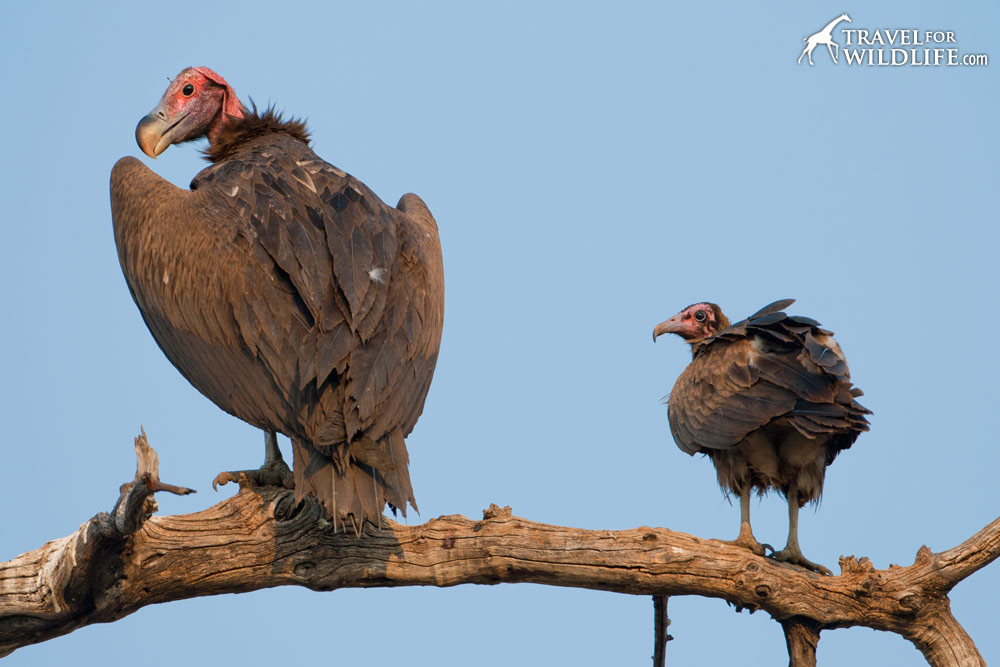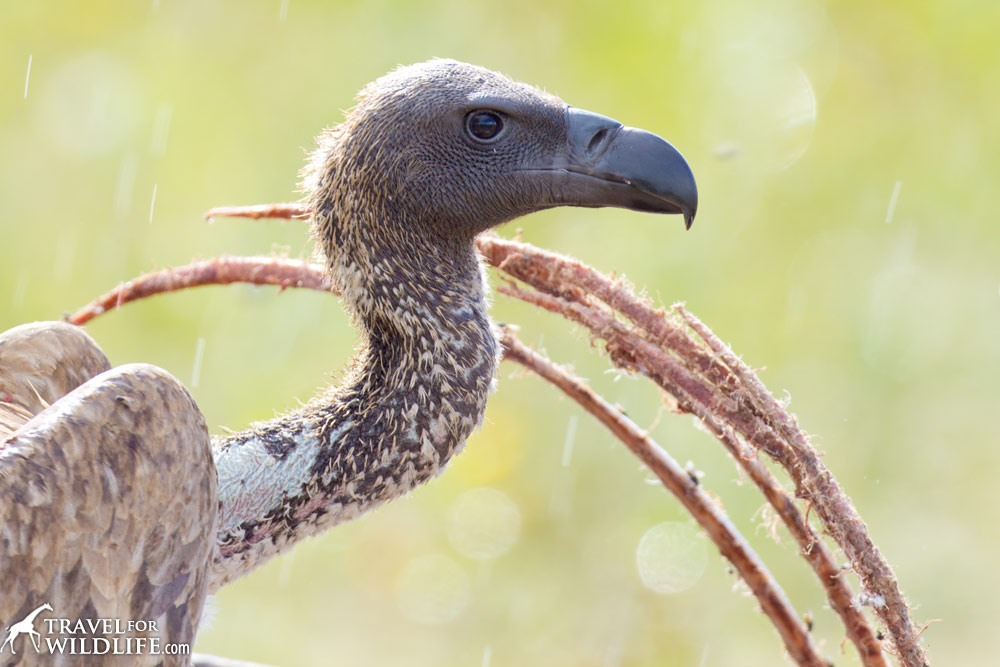Different species of vultures play very different rolls at a carcass. What I love about this photo is that it shows the two extremes of Southern African vultures side-by-side.
On the left we have the huge and rather rare Lappet-faced Vulture. He is a powerhouse with a strong sharp bill and fills the role of a “tearer”. Other species of vultures depend on tearers like the lappet-faced to open up a dead animal.

In between the two extremes we have the “pullers”. These represent the bulk of African vultures known as griffons who have long featherless necks perfect for pulling meat deep out of the middle of a carcass. In southern Africa this role is primarily filled by the White-backed Vulture.

On the right we have the other extreme: a Hooded Vulture. He is a “picker”, a smaller vulture with a more generalist diet and a longer, more delicate bill. Pickers come through after the tearers and pullers and pick the bones clean and clean up the scraps.
Similar roles are filled by various vulture species in the America’s as well!
Want to see vultures doing what they do best? Check out this short film I made of vultures at a kill in Etosha National Park! Youtube classified it as age restricted so it can only be watched there through this link.

Hal Brindley
Brindley is an American conservation biologist, wildlife photographer, filmmaker, writer, and illustrator living in Asheville, NC. He studied black-footed cats in Namibia for his master’s research, has traveled to all seven continents, and loves native plant gardening. See more of his work at Travel for Wildlife, Truly Wild, Our Wild Yard, & Naturalist Studio.
